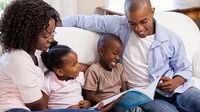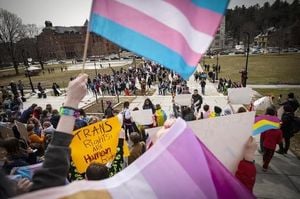In 2024, a significant majority of people with a migration background in North Rhine-Westphalia (NRW) spoke German at home, according to initial results from the Mikrozensus 2024 released by the Statistical State Office (IT.NRW) on July 28, 2025. The data reveal that approximately four out of five individuals with migration experience communicated in German within their households, highlighting important trends in language use among immigrant communities and their descendants.
The Mikrozensus, an annual survey conducted since 1957 that samples about one percent of the population, provides detailed insights into the linguistic landscape of NRW's diverse population. In 2024, around 5.7 million people with migration experience lived in NRW. Of these, 26.7 percent spoke exclusively German at home, while 54.8 percent lived in households where German was spoken alongside at least one other language. Meanwhile, 18.4 percent of those with a migration background did not speak German at home at all.
These figures reflect a complex picture of multilingualism and language retention within migrant families. Notably, the data show clear generational differences. Individuals who themselves immigrated to Germany after 1955 were less likely to speak German at home compared to their children born in Germany. Specifically, only 18.8 percent of first-generation immigrants spoke exclusively German at home, whereas 42.8 percent of their children did so — more than double the rate. Conversely, about a quarter (25.1 percent) of first-generation immigrants spoke no German at home, while this figure dropped sharply to just 5 percent among their descendants.
These generational shifts suggest a gradual linguistic integration into German society, with children of immigrants more frequently adopting German as their primary home language. However, the persistence of other languages remains strong. Among households where German and at least one other language are spoken, nearly 22 percent still predominantly use German. Turkish emerges as the second most commonly spoken language at home, cited by 15 percent of respondents, followed by Russian (10.3 percent), Arabic (9.8 percent), and Polish (6.6 percent).
For those who do not speak German at home, the dominant languages are Turkish (12.5 percent), Russian (10.7 percent), Arabic (10.5 percent), Ukrainian (9.0 percent), and Polish (7.7 percent). This linguistic diversity illustrates the multicultural fabric of NRW's population and the ongoing importance of heritage languages within migrant communities.
The findings have sparked discussions about the role of bilingualism and the educational implications of language use at home. Studies cited by experts indicate that children with limited contact with German as the language of instruction face greater challenges in learning to read. At the same time, bilingualism is recognized as a facilitator for acquiring German and other foreign languages, suggesting that maintaining heritage languages can be beneficial rather than detrimental.
Tayfun Keltek, chairman of the State Integration Council and a former teacher, welcomed the prevalence of multilingual households but criticized the underutilization of this linguistic asset in Germany. He pointed out that the country offers insufficient native language instruction, which could support children's literacy and overall educational development.
Keltek emphasized, "Children who speak multiple languages bring competencies from home that are not adequately fostered in Germany." He argued that integrating children's mother tongues into education helps with literacy in German and other languages. Furthermore, he highlighted a persistent stigma against bilingualism in certain languages, noting that parents are often advised to speak exclusively German with their children. This advice risks eroding heritage languages, which are integral to identity and emotional expression.
Addressing a common misconception, Keltek stated, "Not speaking German at home does not mean that German values are not appreciated." His remarks underscore the importance of recognizing and valuing linguistic diversity as part of integration, rather than viewing it as a barrier.
The Mikrozensus data thus provide a nuanced understanding of language use among NRW's migrants, showing both the increasing dominance of German across generations and the enduring presence of heritage languages. This dual reality poses challenges and opportunities for policymakers and educators aiming to support integration while preserving cultural identity.
As Germany continues to grapple with questions of migration and integration, these findings highlight the need for educational approaches that embrace bilingualism and multilingualism. Doing so could unlock the full potential of children growing up in multilingual environments, benefiting both their academic success and the broader society.
Ultimately, the linguistic landscape of NRW in 2024 reflects a dynamic interplay between assimilation and cultural preservation, with German firmly established as a common language but with heritage tongues continuing to enrich the social fabric of the region.




